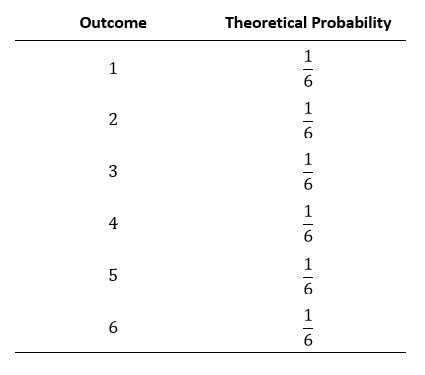An introduction to probability
Introduction to Probability
Probability of an Event
If all of the outcomes in an experiment are equally likely, then the probability of an event, E, occurring is given by:
Note: the number of outcomes that result in event E occurring can never be negative and can never be greater than the total number of outcomes, so we know:
Theoretical Probability vs. Empirical Probability
A probability computed by using a probability formula is called a theoretical probability.
A probability found by observing the actual outcomes of an experiment that is repeated many times is called empirical probability.
Consider rolling a 6-sided die.
We know that each outcome is equally likely, so the theoretical probabilities are as follows:
However, if we actually rolled a 6-sided die 600 times and recorded the outcomes, we may find that the empirical probabilities differ:
(Geogebra [1] is a great tool for simulating this experiment)
Notice only one outcome (rolling a 5) matched the theoretical probability.
contributed by David Ciskowski


